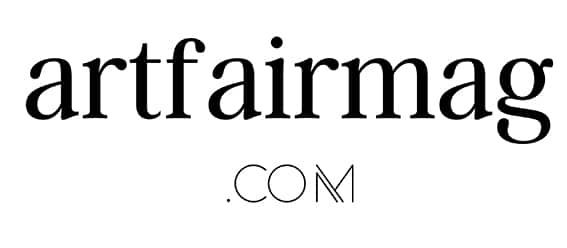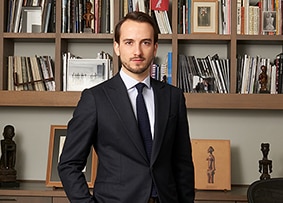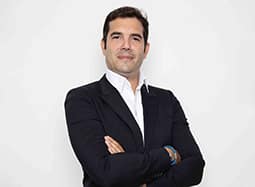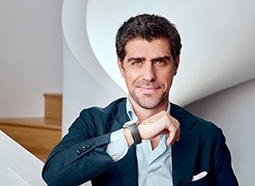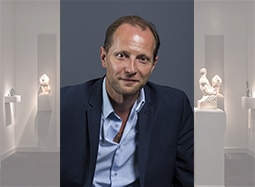Didier Claes
In 2002, after several years participating in many art fairs, Didier Claes opened his first gallery dedicated to Ancient African Art. Initially located in the lively Sablon district, in Brussels, the gallery then moved to the Avenue Louise area, where it still remains to this day. The art dealer has always devoted himself to presenting high quality works of art from important Western collections.
Didier Claes
In 2002, after several years participating in many art fairs, Didier Claes opened his first gallery dedicated to Ancient African Art. Initially located in the lively Sablon district, in Brussels, the gallery then moved to the Avenue Louise area, where it still remains to this day. The art dealer has always devoted himself to presenting high quality works of art from important Western collections.
African Art
14 Rue de l’Abbaye, Ixelles
Bruxelles, 1050, BE
contact@didierclaes.com
+32 (0)2 414 19 29
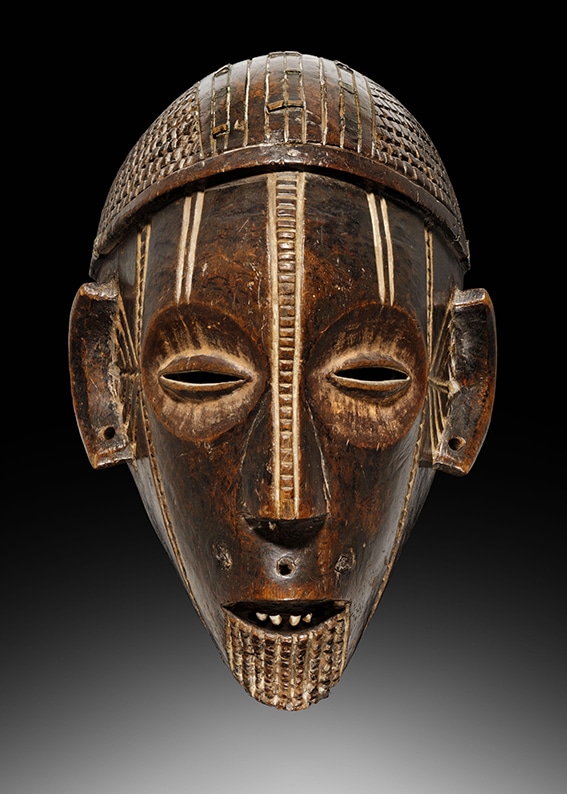
Ngbandi Mask
Wood – 36cm – Early 20th century
Democratic Republic of Congo
Provenance:
Auction, Galerie Modern
Former collection Gustave Chauveau. Brussels, before 1950
Former collection François et Antoine Chauveau. Brussels, 1950-1982
Emile Deletaille. Brussels, 1982
Private collection. 1983-2005
All our Interviews

Read all our exclusive interviews with antique, modern, contemporary & primitive art dealers.

Interview with Didier Claes ~ Director
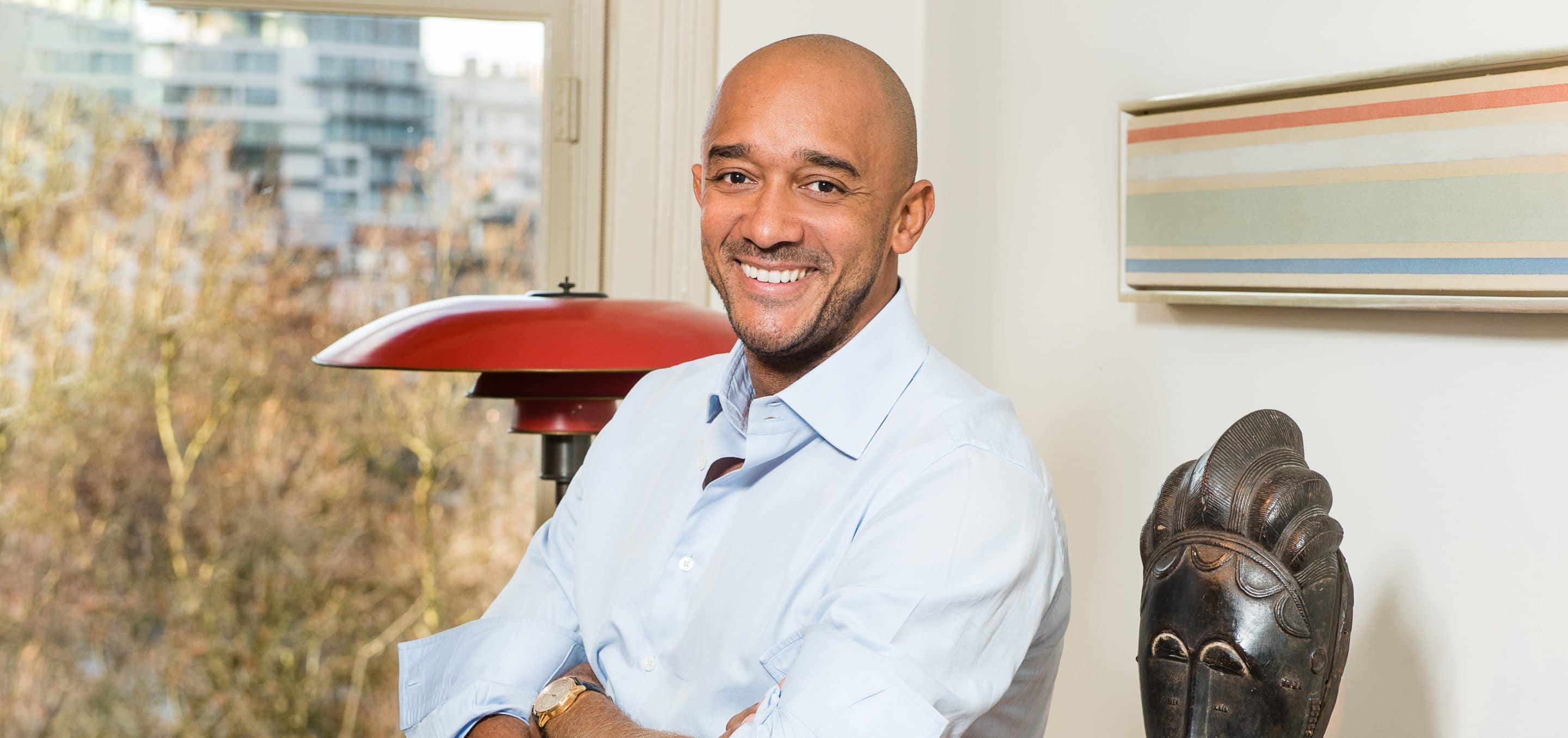
Didier Claes in his gallery © Bernard de Keyzer
Interview by Pauline Loeb-Obrenan, founder of artfairmag.
Didier Claes is one of the most widely renowned specialists in the domain of ancient African art. In addition to being the director of his own gallery, he is Chairman of BRUNEAF, Vice-Chairman of BRAFA and member of several Chambers of antiquarians. I had the chance to speak with Didier about his career path, his gallery, his clients and to clarify the concept of African art.
artfairmag: Didier, for those who don’t know you yet, who are you and how did you get to African art?
Didier Claes: I was born in Congo to a Congolese mother and a Belgian father. I grew up in Kinshasa and arrived in Belgium 30 years ago. I was immersed in a milieu of art dealers and anthropologists, and from my childhood I frequented the art world from Kinshasa to Brussels, a period when the last works of art from Africa were being removed from their territory of origine.
artfairmag: My question may seem naive, but what exactly is African Art? Is it linked to a geographical area, a period, a culture?
D. C.: African art is an art with no trace of ego, without signature, an art from anonymous artists. Pieces are not works of art but common objects, commemorative works. In spite of that, they are of a great realization and very often the result of a great mastery.
artfairmag: What is your core specialty within African Art and how do you find the pieces you sell?
D. C.: I am specialized in the art of the Congo but also of all Black Africa. I buy the objects from large collections – colonial and private – but also on the art market (public sales, colleagues etc.).
“African art is an art with no trace of ego, without signature, an art from anonymous artists.”
artfairmag: Twentieth-century African studies demonstrate that art in Africa needs to be understood in African terms, rather than from a European worldview. As an Occiental art dealer, do you focus solely on the aesthetic value of the artworks or do you also offer an ethnographic reading to your collectors?
D. C.: Aesthetics is crucial since it was collectors see at the first glance. But the ethnographic knowledge brings a lot of information and helps us understand the meaning of an artwork and why it was created. Each and every pieces that I sale combine these two aspects.
artfairmag: Speaking about clients, are they more institutions or private collectors? Is there a typical African art buyer or a real variety in the profiles?
D. C.: The customer base has changed a lot in recent years.Institutions remain strong in the art market and continue to acquire pieces, but the largest percentage remains collectors, mainly European and American. They are younger and younger and most often come from the field of contemporary and modern art.
artfairmag: With the current health crisis, the art world has been forced to enter the digital age. Do you think this will continue over time and force your profession to evolve?
D. C.: The health crisis has raised a lot of questions and we had to be very inventive to deal with them. I think that social networks are a wonderful communication platform but that digitalization – although necessary – will never replace the human contact that is specific to the art market.
artfairmag: To conclude this interview, could you present us an artwork – which may or may not come from your gallery – that is special to you?
D. C.: I chose this Ngbandi mask which is one of the most famous masks of the art of Congo and certainly one of the most important. It was exhibited for the first time during the 1958 Brussels Universal Exhibition. It belonged to several famous art dealers and I was lucky enough to buy it and then sell it recently to a major collector.
More Interviews
Lucas Ratton
Located in the heart of Saint Germain des Prés, Galerie Lucas Ratton is specialized in high-quality Tribal Art, like sculptures, masks, magical piece, headdresses and fetish figures.
Bailly Gallery
Bailly Gallery focuses on modern and Post-War art. Many great artists are showcased as Picasso, Matisse, Calder, Poliakoff, Chagall, Renoir, Renoir, among others.
Colnaghi
Created in 1783, Colnaghi is one of the oldest galleries. Specialised in the European Old Master paintings and sculptures, it is co-directed since 2015 by Jorge Coll.
Xavier Eeckhout
When Xavier Eeckhout opened his first gallery in 2000, he made the audacious choice to turn to a very specialized field: animal art, especially sculpture.
